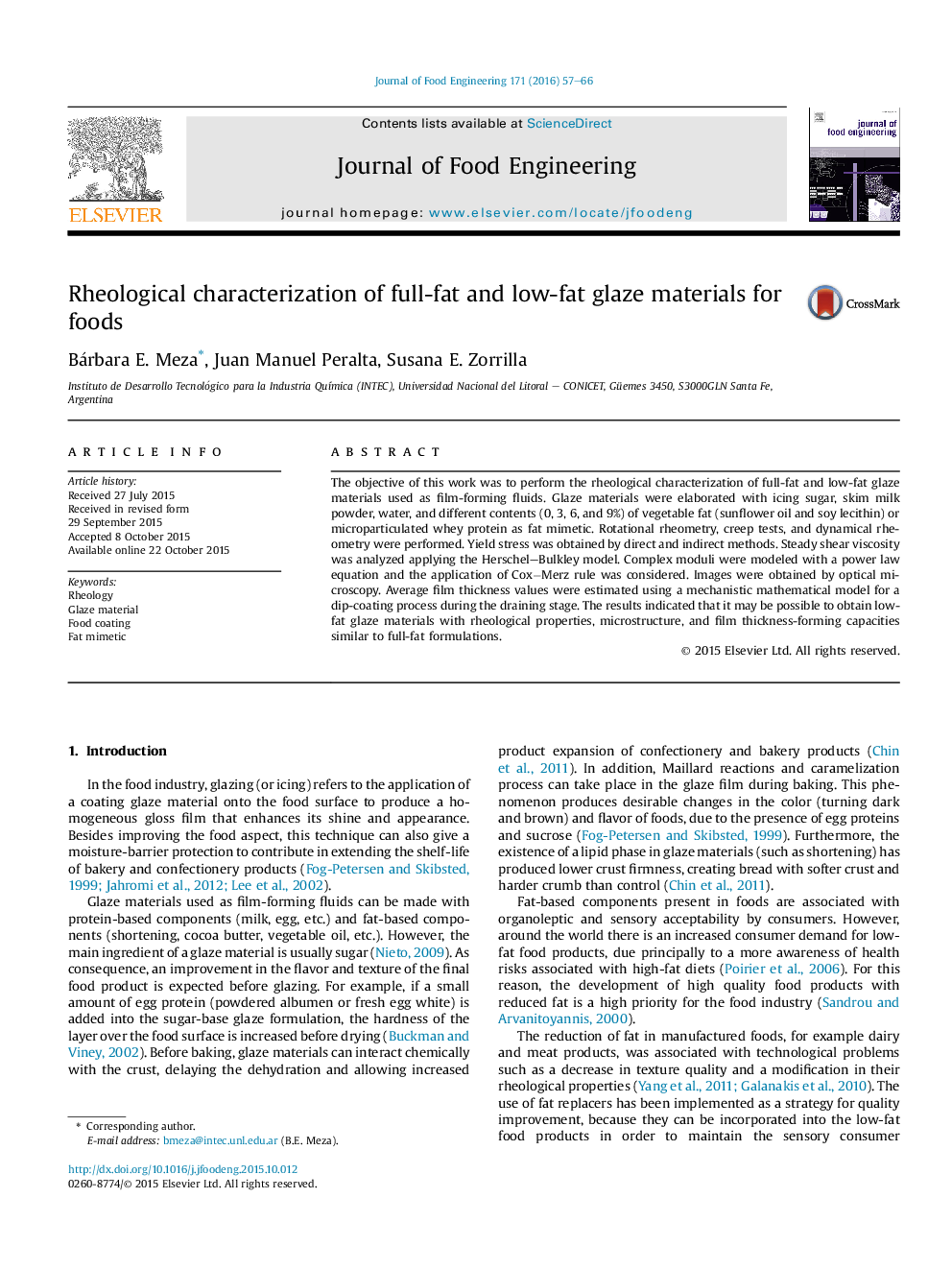| Article ID | Journal | Published Year | Pages | File Type |
|---|---|---|---|---|
| 222780 | Journal of Food Engineering | 2016 | 10 Pages |
•The rheological characterization of glaze materials for foods was performed.•Rotational and dynamical rheometry were carried out.•Images of each formulation and ingredients were obtained by optical microscopy.•Average film thickness values were estimated using a theoretical mathematical model.•Low-fat glazes with similar characteristics than full-fat glazes were obtained.
The objective of this work was to perform the rheological characterization of full-fat and low-fat glaze materials used as film-forming fluids. Glaze materials were elaborated with icing sugar, skim milk powder, water, and different contents (0, 3, 6, and 9%) of vegetable fat (sunflower oil and soy lecithin) or microparticulated whey protein as fat mimetic. Rotational rheometry, creep tests, and dynamical rheometry were performed. Yield stress was obtained by direct and indirect methods. Steady shear viscosity was analyzed applying the Herschel–Bulkley model. Complex moduli were modeled with a power law equation and the application of Cox−Merz rule was considered. Images were obtained by optical microscopy. Average film thickness values were estimated using a mechanistic mathematical model for a dip-coating process during the draining stage. The results indicated that it may be possible to obtain low-fat glaze materials with rheological properties, microstructure, and film thickness-forming capacities similar to full-fat formulations.
